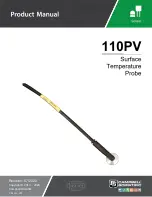
Mute on Power-Up
This function initiates a mute cycle after power is applied to the Safety Controller. If selected, the Mute on Power-Up
function will initiate a mute when:
•
The Mute Enable input is On (if configured)
•
The safety device inputs are active (in Run mode)
•
Mute sensors M1-M2 (or M3-M4, if used, but not all four) are closed
If Auto Power-Up is configured, the Controller allows approximately 2 seconds for the input devices to become active to
accommodate systems that may not be immediately active at power-up.
If Manual Power-Up is configured and all other conditions are satisfied, the first valid Power-Up Reset after the muted
safety inputs are active (Run state or closed) will result in a mute cycle. The Mute On Power-up function should be used
only if safety can be assured when the mute cycle is expected, and the use of this function is the result of a risk
assessment and is required by that particular machine operation.
WARNING: The Mute on Power-Up should be used only in applications where:
•
Muting the System (MP1 and MP2 closed) when power is applied is required
•
Using it does not, in any situation, expose personnel to hazard
Mute Sensor Pair Debounce Times
The input debounce times, accessible under the Advanced settings in the Mute Sensor Pair properties window, may be
used to extend a mute cycle after a mute sensor signal is removed. By configuring the close-to-open debounce time, the
mute cycle may be extended up to 1.5 seconds (1500 ms) to allow the Safety Input Device to turn On. The start of the
mute cycle can also be delayed by configuring the open-to-close debounce time.
Muting Function Requirements
The beginning and the end of a mute cycle is triggered by signals from a pair of muting devices. The muting device circuit
options are configurable and shown in the Mute Sensor Pair Properties window. A proper mute signal occurs when both
channels of the mute device change to the Mute Active states while the muted safeguard is in the Run state.
The Controller monitors the mute devices to verify that their outputs turn ON within 3 seconds of each other. If the inputs
do not meet this simultaneity requirement, a mute condition cannot occur.
Several types and combinations of mute devices can be used, including, but not limited to photoelectric sensors, inductive
proximity sensors, limit switches, positive-driven safety switches, and whisker switches.
Corner Mirrors, Optical Safety Systems, and Muting
Mirrors are typically used with safety light screens and single-/multiple-beam safety systems to guard multiple sides of a
hazardous area. If the safety light screen is muted, the safeguarding function is suspended on all sides. It must not be
possible for an individual to enter the guarded area without being detected and a stop command issued to the machine
control. This supplemental safeguarding is normally provided by an additional device(s) that remains active while the
Primary Safeguard is muted. Therefore, mirrors are typically not allowed for muting applications.
Multiple Presence-Sensing Safety Devices
Muting multiple presence-sensing safety devices (PSSDs) or a PSSD with multiple sensing fields is not recommended
unless it is not possible for an individual to enter the guarded area without being detected and a stop command issued to
the machine control. As with the use of corner mirrors (see
Corner Mirrors, Optical Safety Systems, and Muting
39 ), if multiple sensing fields are muted, the possibility exists that personnel could move through a muted area or access
point to enter the safeguarded area without being detected.
For example, in an entry/exit application where a pallet initiates the mute cycle by entering a cell, if both the entry and the
exit PSSDs are muted, it may be possible for an individual to access the guarded area through the “exit” of the cell. An
appropriate solution would be to mute the entry and the exit with separate safeguarding devices.
WARNING: Guarding Multiple Areas
Do not safeguard multiple areas with mirrors or multiple sensing fields, if personnel can
enter the hazardous area while the System is muted, and not be detected by supplemental
safeguarding that will issue a stop command to the machine.
XS/SC26-2 Safety Controller
39
















































